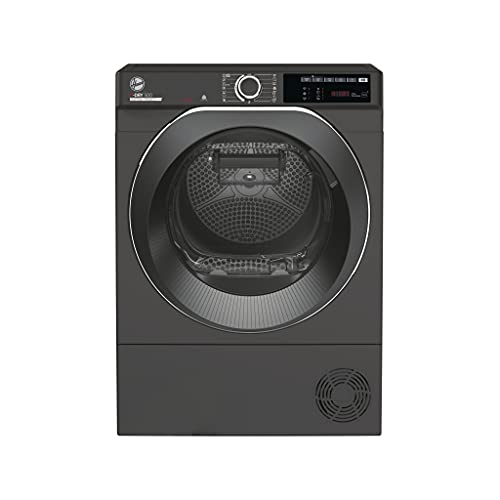10 Mobile Apps That Are The Best For Tumble Dryers Heat

Tumble Dryers Heat Up Your Laundry
A tumble dryer makes use of a heater and fan to warm the clothes inside the drum. The air is then moved by an electric motor around the drum, causing water in the clothes to evaporate.
The resulting steam is extracted through a hose and vented out. It is also pumped through a lint collector, which must be cleaned on a regular basis.
Condenser dryers
Condenser tumble dryers are best choice for heating your laundry as they don't require venting. They work by converting hot air into water that is then pumped from the dryer. They're typically the most efficient dryers, however, they can be pricier.
Vented tumble dryers use warm air from the space they're in, which is then blown around the drum as it spins. The moisture inside the clothes is evaporated and vented outwards. This is usually accomplished by a hose that runs out the back of machine. This process requires a lot of energy and is only appropriate for those who have a good vent that leads to the outside.
With a condenser model, the air is heated within the drum with the heating element which consumes a lot less energy than with vented machines. The hot air passes over the laundry that is tumbling and removes any moisture, which is then transferred into a separate tank for condensation that you must empty regularly.
The tank can be emptyed by pumping water through the drain hole on the bottom or by using an attached hose to the machine, based on the model. Some models will let you connect it to your plumbing, so that the water is pumped directly into your drainage system (as an option on certain machines).
This type of dryer can be freestanding or fully or semi-integrated with the controls and control panel hidden behind a door that is a match to your kitchen appliances. The dryers are usually bigger than vented models. Some of the top models have additional features such as smartphone control and additional programs. They're not as easy to install as vented models, however since you'll need an area within your home that doesn't get wet, isn't close to any other appliances, and can be able to accommodate the tank. It's a good idea to engage a reputable installer to install the ductwork. The flexible, long hose needs to be attached to the appliance correctly and routed in a way that does not have more than three right angles of bends or kinks.
Heat pump dryers
The heat pump dryers are the newest on the block, but they're already one of the most energy efficient types of clothes dryers that are ventless. They don't have a vent to release hot air into the outside of your home, but instead utilize compressors to cool and recycle the air that was heated by your electric or gas clothes dryer. This cooled air is then passed through the drum of the dryer, sucking up water from your clothes, and utilizing that heat to continue drying.
These dryers are more efficient than vented electric or gas clothes dryers and are backed by the Energy Star program noting that they use around 28 percent less electricity than traditional dryers. This could save you money over time when your energy bills go down. They also operate at lower temperatures than electric and gas dryers, making them easier on your clothes during the drying process.

When shopping for a heat-pump clothes dryer, you should be aware that it may take longer to dry your clothes than a vented unit. That's because the dryer doesn't release any additional heat to accelerate the drying process which means it takes longer for your wet clothes to get all of the moisture out and begin cooling down.
Many manufacturers provide a range of features in their heat pump dryers to ensure you make the most of the purchase. Certain models, like are equipped with an auto-sensing feature that will stop the dryer after your laundry is dried, preventing overdrying and saving you energy. Certain models come with reverse-tumbling capabilities to reduce wrinkles. Some models allow users to control the dryer remotely or via a smartphone application. These are particularly useful when you live in a space that doesn't have an outdoor clothesline or you don't want for the installation of a vent.
Inverter dryers
Inverter dryers are among the most energy efficient appliances on the market, allowing you to save energy costs. They make use of advanced motor technology to optimize drying processes, preventing excessive drying while keeping the fabric's quality. This allows for a longer life and makes them a good investment.
heat pump tumble dryers have less noise than traditional dryers, offering an easier and more peaceful laundry experience. This makes them a good choice for households with small children or older adults. Additionally, they are equipped with a variety of energy-saving options which allow you to save even more money.
The tumble dryer with a heat pump warms the air inside the machine before blowing it over the clothes. The cooled air is transferred back to the heat pump, where it's heated. This process is more efficient than the traditional dryers, which use hot air and consume a lot energy.
The LG dual-inverter heat pump is a fantastic option for homeowners who are concerned about the environment. The Eco Hybrid system uses low temperature cycles to reduce shrinkage and smoothen creases. The British Allergy Foundation has certified its Allergy Cycle, which is able to reduce allergens, such as dust mites, which can cause asthma, hayfever, and other respiratory problems.
This LG dryer also comes with steam functions that allow you to refresh and dewrinkle clothes in just a few minutes. It also has a variety of additional cycles to suit your needs, including cycles for delicates, wool, and bulky items. This model also has a moisture sensor which will detect when your laundry is at the ideal level of dampness to allow air drying or ironing.
When choosing a new tumble dryer, it's important to consider energy efficiency and the variety of programs available. You should look for models that have an Energy Star rating. This means that it is the most efficient machine in its category. It should also be equipped with a sensor that will shut off the machine once your laundry is dried and reduce energy consumption. Additionally, it should have an open tank for condensed water, which can be emptied into the sink or directly connected to the drain pipe of the washer to provide additional convenience.
Noise
The tumble dryer is a common item in many homes. It is a great way to keep our clothes clean and dry. This is especially true if you reside in a cold climate. As with any electrical appliance it can make odd noises at times, especially when it is struggling. If you hear a noise that sounds like metal is scraping on another part of the appliance, it's best to turn it off and check whether there's an imbalance in the way it's positioned. This could be caused by a faulty leg and it's crucial to fix it before it causes further damage to the machine.
Other sounds that could indicate there is something going on with your tumbler include high-pitched squeaks, or continuous humming. A squeaking noise is often an indication of a belt issue A humming sound can be an indication that the motor needs to be checked.
If you hear a noise when the drum of your tumble dryer turns, it could be because the drum pivot bearing has worn down. You can check this by gently rotating the drum of your tumble dryer and observing any knocks or bumps. If you can feel it, you'll need replace the bearing.
It's also important to note that certain fabrics can't be tumble dried, even with the no-heat setting. This includes anything made from wool, cashmere silk, lace, silk or leather. It is best to hang these items or lay them flat to dry.
It is also essential to ensure that your tumble dryer is correctly installed, which means that you must ensure that it is properly connected to your vent hose and that the hose isn't blocked or twisted along its length. The hose must be permanently connected to the tumbler and put in a place that allows it to vent outdoors through a door or window. If you don't do this, the tumbler will not be able to breathe, causing it to struggle and make noises. The longer you leave this to happen the more likely it is that your tumble dryer will eventually fail completely.
